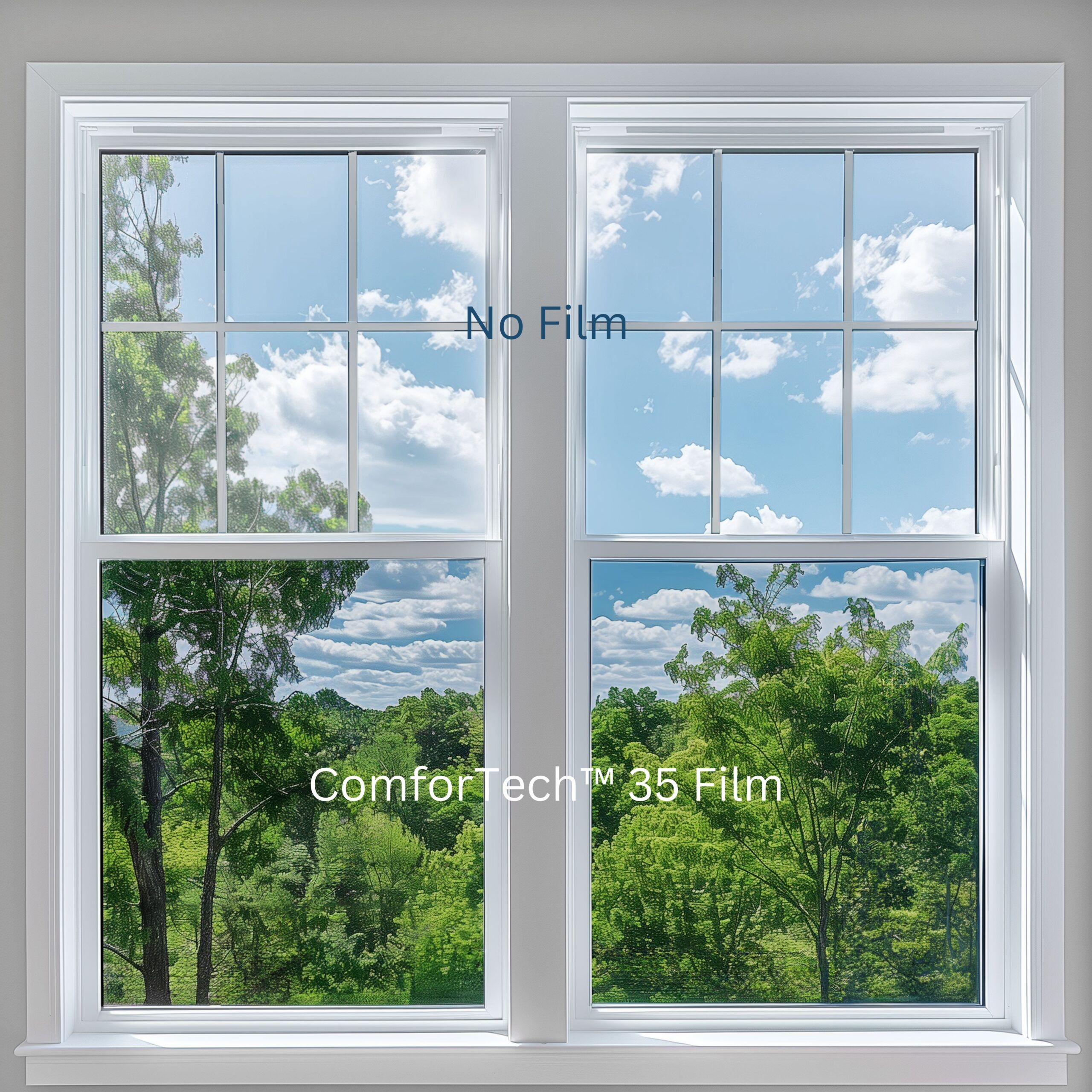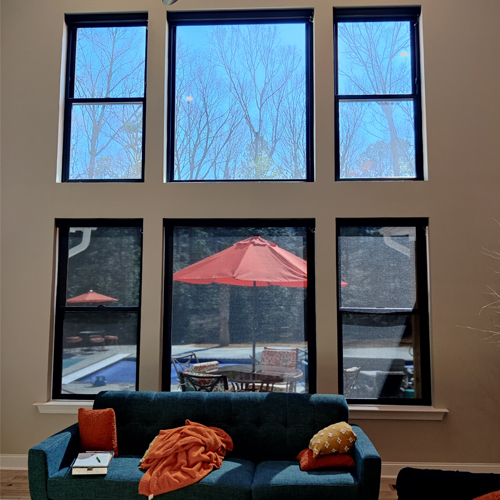Residential Window Tint: Rise Safety And Security and Add a Layer of Security
Residential Window Tint: Rise Safety And Security and Add a Layer of Security
Blog Article
Just How Residential Home Window Tinting Boosts Your Home's Power Effectiveness
Residential window tinting offers an engaging service for house owners looking for to boost power efficiency within their living areas. By applying specialized films to windows, it successfully minimizes warmth transfer, therefore supporting interior temperatures and lessening the need for excessive heating or cooling.
Understanding Home Window Tinting
Understanding home window tinting is essential for homeowners seeking to boost both comfort and power effectiveness in their space. Residential Window Tint. Window tinting includes the application of a thin film to the interior or outside surface of glass home windows. This film can considerably regulate the quantity of sunshine and warm that goes into a home, hence influencing indoor climate conditions
There are different types of window tinting movies offered, each with distinct residential or commercial properties. For circumstances, dyed movies soak up solar energy, while reflective films deflect it away from the glass surface. Ceramic films offer an equilibrium of exposure and heat denial, making them a prominent selection amongst house owners. The efficiency of home window tinting is typically determined by its Visible Light Transmission (VLT) portion, which indicates just how much light can travel through the movie.
Benefits of Power Performance
Window tinting not just improves aesthetics however also plays a substantial function in improving energy effectiveness within residential rooms. By lowering warmth transfer via home windows, colored films produce an extra stable indoor climate, which can result in substantial decreases in energy usage for cooling and heating. This energy efficiency translates right into reduced utility bills, offering house owners with considerable lasting financial savings.

In addition, window tinting improves the comfort of living areas. By minimizing glare and obstructing harmful UV rays, tinted home windows develop an even more pleasant atmosphere, which can bring about enhanced wellness for owners. The security against UV rays additionally assists preserve furnishings and floor covering from fading, contributing to the durability of house products.
Exactly How Tinting Functions
Tinting films operate through a mix of sophisticated products and technologies created to manage the quantity of solar power entering a home. Mostly made up of polyester, these films typically include ceramic or metal bits that show and take in heat. This twin ability enables them to significantly lower the penetration of ultraviolet (UV) rays and infrared radiation while allowing visible light to travel through.
The efficiency of window tinting is measured by its solar warm gain coefficient (SHGC), which shows exactly how much solar power is transmitted via the window. Reduced SHGC worths are preferable as they signify greater warm being rejected. Furthermore, home window colors can include a variety of tones, allowing homeowners to tailor their visual preferences while boosting power performance.
In addition, these movies work as a barrier, avoiding warmth loss throughout cooler months by showing interior heat back into the home. This thermal insulation effect matches the cooling advantages acquired throughout warmer months, adding from this source to a balanced indoor environment year-round. By handling solar power properly, household home window tinting not just enhances comfort however additionally plays a crucial duty in reducing power consumption and decreasing energy costs.
Picking the Right Color

There are various kinds of window films available, including dyed, metalized, and ceramic. Dyed movies are affordable but might have restricted longevity. Metalized movies use much better warmth being rejected yet can disrupt electronic signals. Ceramic movies supply excellent heat control without endangering presence and are very long lasting, making them a preferred choice.
Noticeable light transmission (VLT) is another vital factor, as it suggests the amount of natural light that can travel through the tinted glass. Homeowners need to choose a color with a VLT that complements their illumination preferences while still providing appropriate glare decrease.
Additionally, evaluating the solar heat gain coefficient (SHGC) can help establish just how well a tint can block heat from sunshine. A reduced SHGC shows better heat control, inevitably boosting power efficiency.
Setup and Maintenance Tips
Correct installation and maintenance are essential elements in making the most of the benefits of residential window tinting. Specialists additionally utilize specialized techniques and tools, which can enhance the durability and performance of the color.
Adhering to setup, upkeep is important to lengthen the life of the home window film. It is suggested to wait at least thirty day before cleaning up the tinted windows to enable the glue to heal fully. When cleaning, utilize a soft towel and a gentle, ammonia-free cleaner to stay clear of harming the film. Prevent abrasive products that could damage the surface.
Addressing these problems without delay can protect against additional damage and maintain energy performance. By adhering to these installment and maintenance suggestions, homeowners can guarantee their home window tinting continues to provide considerable power click for info cost savings and convenience for years to come.
Final Thought
In verdict, property home window tinting serves as a reliable option for enhancing energy effectiveness within homes. By decreasing warmth transfer and blocking harmful UV rays, window films add to reduce energy intake and improved interior comfort. The choice of suitable tinting materials, together with proper installation and upkeep, additionally makes the most of these advantages. Ultimately, home window tinting represents a lasting investment that not only reduces energy expenses yet likewise promotes a comfy living setting throughout the year.
Home window tinting includes the application of a thin film to the inside or image source exterior surface of glass home windows. By decreasing heat transfer via home windows, colored movies produce an extra secure indoor environment, which can lead to considerable decreases in power consumption for home heating and cooling.The performance of window tinting is determined by its solar warm gain coefficient (SHGC), which shows exactly how much solar energy is transferred via the home window. By managing solar energy properly, property window tinting not only boosts convenience but also plays an important duty in lowering power usage and reducing utility costs.
By decreasing heat transfer and obstructing dangerous UV rays, home window films contribute to lower power usage and enhanced interior comfort.
Report this page